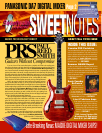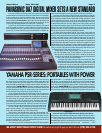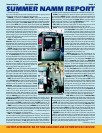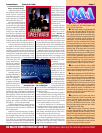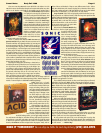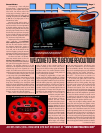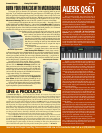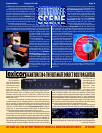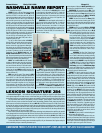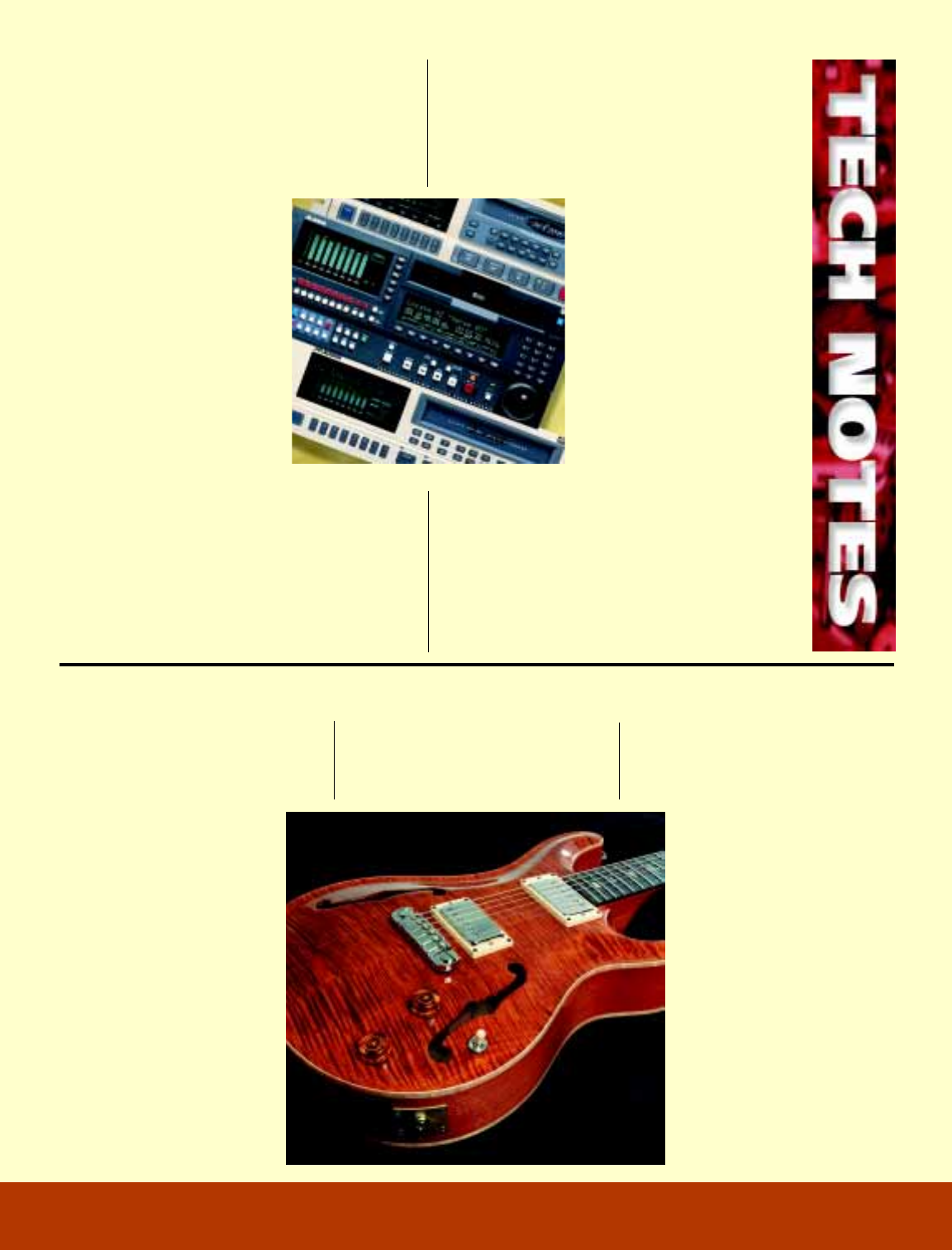
By Jim Miller
Like most of you, I can sing a sad song these days. See, I didn’t get to
Nashville for Summer NAMM. Oh I know, you’re thinking, “But Jim, you’re an
industry powerhouse! How could there be a NAMM Show without you?”
Okay, so you weren’t really thinking that, but it’s nice of you to humor
me. Actually, the reason I couldn’t make it to NAMM was simple: I was running
behind in my work. Besides my regular duties with Sweet Notes, I had several
articles and reviews to complete for Electronic Musician, and I was putting
the finishing touches on samples for a new
Sweetwater CD ROM (if you’re nice, Daniel Fisher
will tell you all about it soon).
Fortunately, as you have probably already
noticed, Sweetwater’s own David Stewart was
there in Nashville and he put together this
issue’s most excellent overview of all that was
new at the show — and there was plenty; so
much, in fact, that I’ve had to give up much of
my page so we can fit it all in. Of course, the more
amazing new gear there is, the more we find we
need, right? I can hardly believe the tools we have
available to us these days.
For my (brief) article this issue, I want to
discuss a topic that’s on a lot of people’s minds
lately, which is 16-bit vs. 20- and 24-bit
technology. Hardly a day goes by that I don’t get
asked about this: Is 16-bit finished as a format?
Are we dinosaurs if we don’t step up to the higher resolution formats? It’s an
interesting question and one that certainly will not get definitively answered
for some time. But let me share some personal observations.
About six years ago, a major consumer stereo publication conducted
exhaustive blind testing to determine whether CDs were actually superior to
(of all things) cassettes. We all have an opinion on this subject, right? Well, I
won’t keep you in suspense. With properly calibrated, high quality cassette
machines running with Dolby C noise reduction, most of their panel could not
— and I repeat, could not — consistently tell the difference between a cassette
and a CD. No, not even those with so-called “golden ears.” If they boosted the
Sweet Notes Early Fall 1998 Page 11
FRUSTRATED? NEED HELP?
Our Tech Support Team is just a phone call away
:
(219) 432-8176
level of the cassette a bit, many people chose the cassette as the better-sounding
format (thinking it was the CD). Amazing, isn’t it?
Okay, if it’s so tough to hear the difference between cassettes and CDs,
what’s the likelihood that listeners will hear the difference between, say, 16-bit
and 20-bit recordings?
Obviously, when the 16-bit, 44.1kHz format was introduced in the late 1970s
(has it really been that long?), those were the upper limits of our technology.
Still, I have lots of CDs that were recorded at the dawn of digital that sound
fantastic. The reason is simple: The recording
engineers on these projects (and on analog
recordings of the same vintage) were masters of
getting the most out of their medium.
Now I’m no different than anyone else. Give me
the choice between 16-bit and 20-bit and I’ll take
20-bit every time. Problem is, I still have a 16-bit
wallet (ouch!). And the hard truth is that I still
have not produced any recordings that have
absolutely tapped the upper limits of 16-bit’s
potential. Another fact that should be apparent is
that not all 16-bit recorders are created equal.
Some sound better than others. The same, I’m
sure, will be said for higher bit machines.
So what it boils down to is this: What’s your
budget? Higher bit formats are the future, no one
can argue with that. But neither can you argue
with the fact that 16-bit will be with us for quite
some time to come and sounds pretty awesome for 20-year old technology. Until
my ship comes in (and damn it, I’m still waiting) I will try to make the best
recordings possible using my present 16-bit machines. When the day comes
that the technology cannot handle what I am capable of producing, that’s the
day I will bite the bullet, call the bank and switch to the highest bit-rate I can
afford. For most of us — maybe not you, but the majority of us — I think that
day is still a ways down the road.
With that I’ll declare the subject open for discussion and thoughtful
responses (if any) will be addressed here next issue. Meanwhile, my new
philosophy is simple: Life’s short, make music.
“Hey, my ADAT can beat up your ADAT!”
— Continued from Page 1
the bridge and 1 3/4" at the rim with a carved spruce
top, carved mahogany back and sides and the superb
McCarty neck profile (nice and chunky, my favorite) with
moon inlays. Also included are the newly designed
McCarty Archtop pickups with sound that
perfectly complements the look and feel of the
instrument, a PRS stop tailpiece, 14-to-1 low
mass tuners with ebony buttons. You also get
the standard McCarty electronics: one volume
and tone control plus three-way selector
switch. The McCarty Hollow Body II ($3600
list), has the same features as the Hollow body,
but with a carved,figured maple top and back.
If you like your guitars slightly fatter (and
I mean that in the best possible way!) there’s
the McCarty Archtop ($3200 list), which has
all the features of the Hollow Body, but is 4"
deep at the bridge and 2 3/4" at the rim with
carved spruce top. The McCarty Archtop II,
($3800 list) has the same features, but with a
carved, highly figured maple top and back.
Options include Bird inlays, adjustable stop
tailpiece and rosewood headstock veneer.
At the top of the hollow body PRS line is
the magnificent McCarty Archtop Artist
($10,000 list). It features a carved Artist grade,
highly figured maple top and back and carved mahogany
sides, 4" deep at the bridge and 2 3/4" deep at the rim.
Features include a Brazilian rosewood fingerboard,
Abalone birds with gold outline, rosewood head stock
veneer, wide fat neck carve, adjustable stop tailpiece, 14-
to-1 low mass tuners, ebony buttons and gold hardware.
Whew! This is a serious guitar for serious guitarists!
Also new this year is the McCarty Soapbar, which
is basically a McCarty with a solid mahogany body and
special Seymour Duncan “soapbar” P-90s. Options
include Abalone bird inlays, PRS tremolo and
14-to-1 low mass locking tuners. Though it’s
not new, the Carlos Santana model ($8000
list) is now a special order. It includes a leather
case, rippled Abalone purfling, Brazilian
rosewood fret board, rosewood head stock
overlay and an optional stop tailpiece.
The Paul Reed Smith philosophy is simple:
Make guitars that players just won’t be able
to put down. The craftsmen at PRS build guitars
with a passion that you might have thought
was gone these days. But it’s not. And you’ll
feel it the very first time you pick up one of
these fantastic instrument.
Whether you’re searching for the perfect
stage ax or that special once-in-a-lifetime
investment, call your Sales Engineer right now
and check out the current selection of Paul
Reed Smiths in the Sweetwater Custom Select
collection. I promise: You’ll have an instrument
that will deliver the tone you’re searching for
with looks to match! — Jim Miller
PAUL REED SMITH: Guitars Without Compromise
The PRS McCarty Archtop II with amber finish



